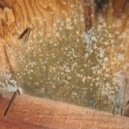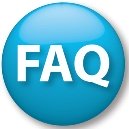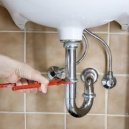Find a pre-screened local mold removal specialist Free Estimate
Find a Mold Specialist Now
Click or Call, Toll-Free 24/7
A Guide to
Mold Assessments & Mold Reports
Mold exists almost everywhere. There are estimated to be tens of thousands of different types of mold in nature, and several hundred different species can be found indoors. In fact, it is very likely that you have microscopic mold spores in your hair and on your clothing right now. We breathe mold, we eat mold, and most of us go about our day none the wiser. That is because mold only becomes a problem when mold colonization goes unchecked and begins to wreak havoc on a structure and/or human health.
When mold growth is first discovered, people will usually try to clean it themselves or paint over it, only to find that the mold keeps growing back. This could go on for months or even years, because what they have failed to realize is, if you don’t fix the moisture problem, the mold will always grow back. Some molds can be particularly dangerous to humans, so it is recommended that folks call a professional to help with a mold problem that won’t seem to go away.
The Professional Mold Assessment: What to Know
Before getting started on a mold investigation, it is very important for the Indoor Environmental Professional (IEP) to understand the concerns and the goal of the client. Most certified mold professionals will start a project with thorough information gathering, client interviews, noting any health concerns, when and where symptoms are worse/better, building history, past water events, areas of concern, etc. A professional mold investigator with field experience will know what questions to ask, what to look for, and how to get to the bottom of almost any mold problem.
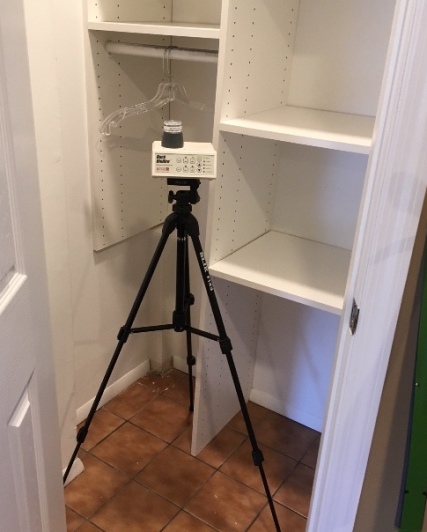 Air sampler in closet
Air sampler in closetAfter the interview process, the next step is to perform a “walk through” of the building. The IEP will perform a physical inspection, while taking notes, photographs, and measurements. Assessing the location(s) of concern is only part of the process however. The IEP is always looking for both visible and hidden clues, noting leaks, structural issues, visible moisture, water stains, odors, etc. Depending on the project, he or she may also inspect the basement, attic and HVAC system, as those are common sources of mold colonization. After thoroughly inspecting the various areas and issues indoors, the IEP will then head outside to take note of the land slope, roof issues, standing water, exterior mold growth, etc. All of these things can affect if, where, and how mold grows.
The IEP will take indicator measurements during the investigation, such as moisture and humidity levels, size and distance of contaminated or wet materials, etc. Mold samples are only collected if deemed necessary for a particular project, and the reasons for this will vary (discerning types of mold growing, discerning IF mold is growing, hidden mold, client request, etc.) If mold samples are collected, any of the following method(s) may be used: tape lift, dust wipe, bulk sampling, and/or air sampling. The samples are labeled and brought to the laboratory for analysis. Generally the lab report will show genus (type) and spores per cubic meter for air samples, and genus (not concentration) for bulk and surface samples.
Deciphering the Mold Report
When the investigation and lab analysis are both complete, the indoor environmental professional will then compile a thorough report. The final mold report should include a detailed summary of the project, the findings of the mold investigation, the lab report (if samples were taken), and the IEP’s professional conclusions and recommendations.
Indoor Air Quality (IAQ) reports usually follow an outline similar to the following:
I. Introduction
II. Observations
III. Indicator Measurements
IV. Sampling
V. Conclusions & Recommendations
VI. References
Here is an example of a typical mold report. As you can see, this seven page document professionally and thoroughly outlines the details of the mold investigation, explaining the visual observations, scientific data, conclusions and recommendations for this particular project.
Sections I, II, & III of this mold report provide an overview of the job, the building and work plan. In section IV. Findings, the IEP describes what was observed during the physical inspection, and informs the customer about the role of moisture in mold growth. A certified mold professional has vast experience determining the various ways that water and moisture can enter a building envelope and in this particular case, it seems that there were issues with the shower and improper drainage. Information about measurements and mold sampling are also described in this section, as well as some helpful “Mold Prevention Tips.”
Resolving moisture issues is the key to nearly every chronic mold problem, and the IEP should always include this information in their mold remediation (clean up) protocol. The remediation recommendations should be detailed and organized by the various areas of concern (in this case, the bathroom, the basement, AND the attic all have issues needing attention). It is then up to the client to find a reputable company to perform the remediation as outlined in the report. It is well known within the mold industry that it is a conflict of interest to do both the mold investigation and the mold remediation on a particular job, and the public should avoid working with a company who offers to do this. If the company is certified and offers both investigation and remediation services, you might want to contact their certifying body to file a report or get clarification.
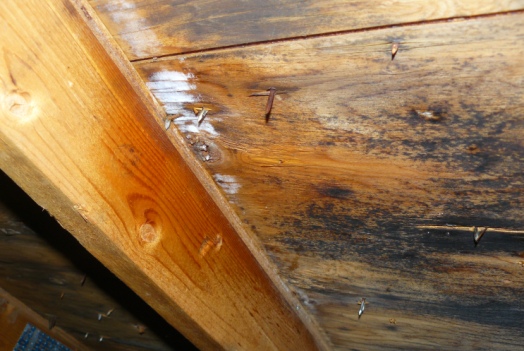 Mold in Attic
Mold in AtticSince mold is not regulated like most environmental contaminants, such as asbestos or lead, the IEP cannot make any determinations regarding “safe exposure limits” of mold, but will provide guidance and detailed recommendations for proper remediation procedure. Additionally, although an IEP will have vast experience speaking with clients about their health complaints, they are not medical doctors, and therefore cannot diagnose a client’s symptoms or verify whether or not mold is causing their health problems. The most you can expect from a properly trained IEP is their opinion about whether or not the mold spore counts are higher than normal or whether or not a particular mold species could be considered unsafe (such as stachybotrys, otherwise known as “black mold.”) If your mold contractor gives you medical advice, this should be another red flag.
Once the remediation is complete, we suggest scheduling a “Post Remediation Verification” or “Clearance Report” with the IEP who did the original inspection. It is important to get verification that the mold remediation was performed professionally, accurately, thoroughly and according to protocol. In a clearance, the IEP will re-inspect all areas of concern with a visual inspection, and will take additional lab samples if needed or requested. The Post Remediation Verification is the final step in a mold investigation, giving the client assurance that the mold issue was handled professionally and properly as outlined in the original mold report.
If you hired someone to help with a mold issue and they either didn’t provide a mold report, or the one they gave you doesn’t resemble this one in level of detail and length, then unfortunately you may be addressing your mold issues again in the future. Poorly managed IAQ projects could very well increase the costs and the health risks of a client. To be effective, mold investigations and mold remediation jobs require the expertise of properly trained individuals. Before hiring anyone to help with your mold issues, it is best to remember that old saying, “Buyer Beware,” and be an informed consumer. The mold industry is largely unregulated, quite complex, and sometimes controversial. Hiring a certified professional and knowing the Indoor Air Quality (IAQ) laws in your state is a good place to start. Here are some great resources:
- Listing of local Professional Indoor Environmental Professionals that can evaluate and test your home.
- This online database (updated annually) lists all of the current IAQ laws in the US, alphabetically by state.
- To find a certified mold professional in your area, visit American Council for Accredited Certification (ACAC).
- For practical tips on hiring a qualified IAQ consultant visit American Industrial Hygiene Association (AIHA).
Return From Mold Reports To Our Main Mold Testing Page
About The Authors:
Guy Sylvester, Jason Muchmore and Jean Gennaro are with Absolute Resource Associates (ARA), an environmental services firm in Portsmouth, NH. Guy has over 25 years of experience in Industrial Hygiene, Indoor Air Quality and Environmental Analytical Testing, is a practicing Industrial Hygienist, Board Certified Microbial Consultant, Board Certified Indoor Environmental Consultant, State Certified Asbestos Inspector, Chapter Director for the Manchester NH Indoor Air Quality Association, and is a published author. His book “Mold: Myth or Monster” has helped countless homeowners and businesses understand and manage indoor mold issues. Jason, Manager of the IAQ Division at ARA, is a Certified Indoor Environmentalist (CIE), a Licensed Asbestos Project Monitor, Asbestos Inspector, and Lead Inspector with nearly 10 years of field experience. Jean is the Director of Marketing at ARA with 30 years of experience in media and marketing, and has spent the past 8 years writing about issues within the environmental industry.
References:
American Industrial Hygiene Association (AIHA)
American Council for Accredited Certification (ACAC)
Recognition, Evaluation & Control of Indoor Mold
Standard of Care for the NH Mold Industry
Environmental Law Institute
“Mold: Myth or Monster?” by Guy Sylvester
Free Home Inspection By A Mold Removal Specialist
Search This Website

Recent Articles
-
See Our 5 Recommended Mold Removal Companies in Covington, KY
Apr 16, 25 12:59 PM
-
See Our 5 Recommended Mold Removal Companies in Wheaton, IL
Jun 20, 24 10:33 AM
-
See Our 5 Recommended Mold Removal Companies in Aberdeen, SD
Oct 08, 21 04:05 PM

